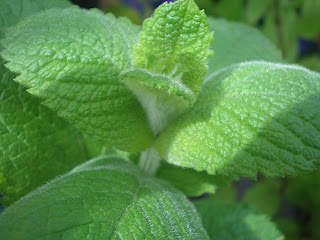With over 600 varieties, the Mint family is one of our most pleasant and useful groups of herbs. Mints are easily identified by their pungent scents, due to their volatile essential plant oils. Fairly safe to use, extremely versatile in making culinary dishes, desserts, teas, candies and alcoholic drinks, mints are a great group of herbs to begin your journey of herbal experimentation with. Mints also have a long track-record of benefiting your health, from easing digestion, headaches and chest problems, to bestowing long life. Thanks to its oils, fresh mint is, of course, by far the best choice. Mints are diaphoretic (induce sweating), stimulating and cooling, perfect in salads or drinks on a hot day, or after dinner to help soothe your stomach, particularly in children.
One of the best ways to choose which type of mint to use in making food or herbal teas is to smell it, since mints can look very similar. Not only this, but mints readily hybridize with each other, forming a completely new plant! You can see this in Mint species names, such as Mentha x, indicating a hybrid. Another key way to identify mints is a square stem (roll it gently between your fingers to feel the flat sides!), which is found in other related species of herbs in the Labiatae family not usually thought of as "mint," such as Motherwort.
To make a simple cold infusion to enjoy the following day:
Slice 1-2 cups of watermelon into chunks, per each gallon of water you wish to infuse with flavor. Place water in a large jar, bowl, or specially designed infuser, then add watermelon. Rinse and add a generous handful of mint. Place your mixture in the refrigerator for a minimum of three hours, or preferably overnight. Your water will not only be nicely chilled, but full of a delicious, cooling, melon-mint flavor. An infuser cuts out the need to strain the mix; you can also serve your water in a straining pitcher. Add some ice cubes to keep the water cool.
Above: Bowles' Mint, or Apple Mint. The broad, bright green, softly furry leaves have a delicious, applelike scent. Like many mints, Apple Mint spreads rapidly in a yard or garden via root runners if left to its own devices.






